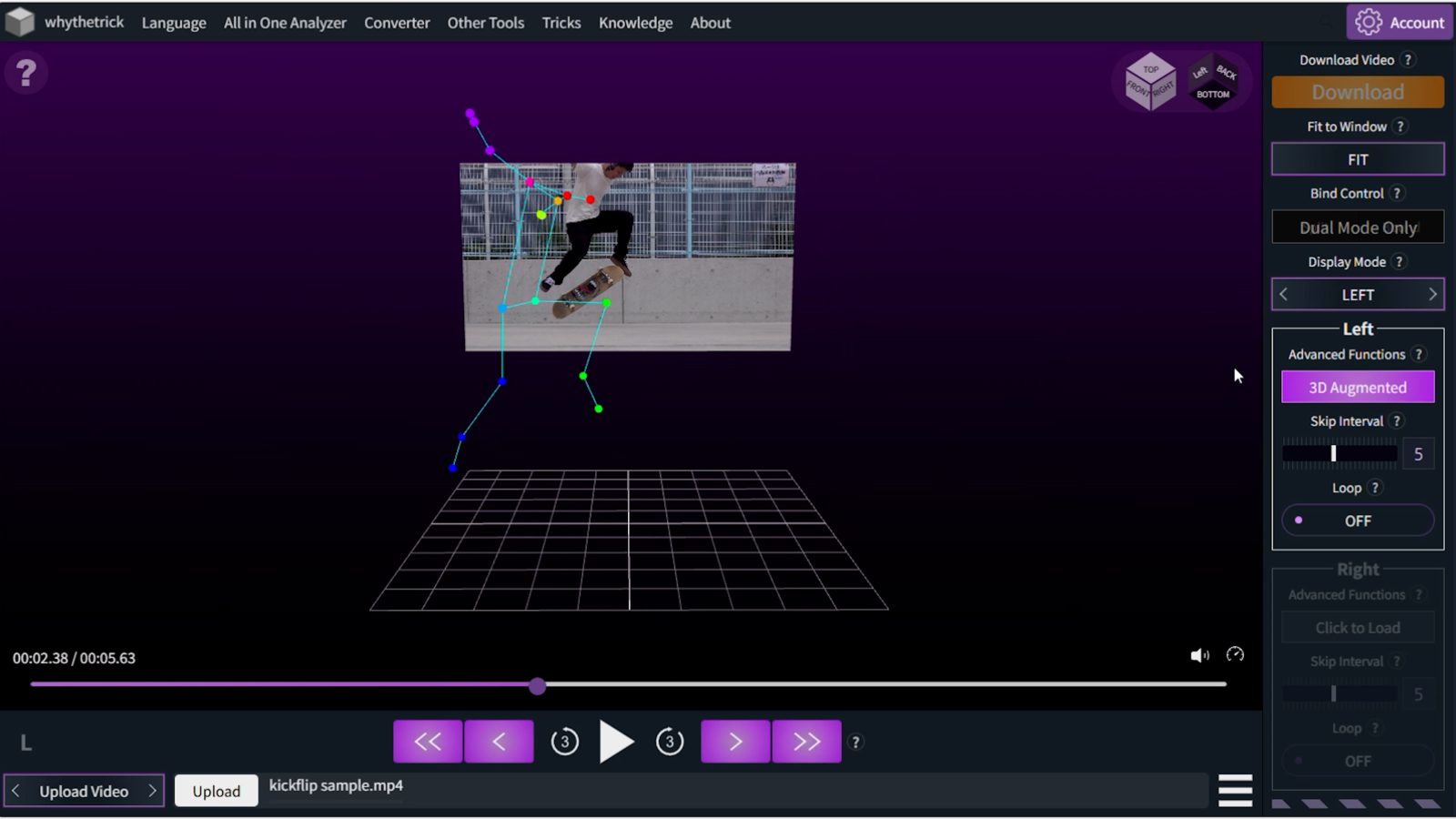"Flick your front foot diagonally upward." A lot of tutorials say that. But even if you do so as hard as possible, the board doesn't flip. Be honest. Really. If the board rises toward you, don't you think it would be easier to flip it by applying force diagonally downward? So why do so many people have to use the phrase "flick upward?" It's not that they are lying. It's just that the phrase "flick your front foot diagonally upward" fails to explain a crucial point.
Summary
Kickflips Rely on Force Direction, Not Strength: Apply Pressure Perpendicular to the Board’s Axis of Rotation
Flipping the board isn’t about power—it’s about direction. Apply force diagonally downward, perpendicular to the board’s axis, for maximum rotation efficiency. Physics guarantees this is the only effective path.
The Foot Appears to Rise, But It Moves Downward Relative to the Knee to Generate Flip Force
Though the foot rises overall, it swings downward relative to the knee. This relative motion creates the flicking force needed to flip the board, even if it looks like the foot goes up.
Every Proper Flick Combines a Vertical Lift and an Outward Arc—Straight Flicks Simply Don’t Work
A successful Kickflip always involves lifting the front foot, then flicking outward in an arc. This lift-and-flick motion matches how physics wants force applied for a clean, controlled board flip.
Introducing All in One Analyzer
An AI-powered motion analyzing tool that features body parts tracking, 2D to 3D video conversion, frame by frame playback and more!
Basic Principles of Physics
Any object in this universe flips most efficiently when you apply a force perpendicular to its axis of rotation. Skateboards are no exception. Applying force perpendicular to the board's axis causes the board to flip most effectively, which is a fundamental physical fact that you can NOT escape from. So, in a Kickflip, the direction of the force you should apply to the board as it rises is diagonally downward — not upward.
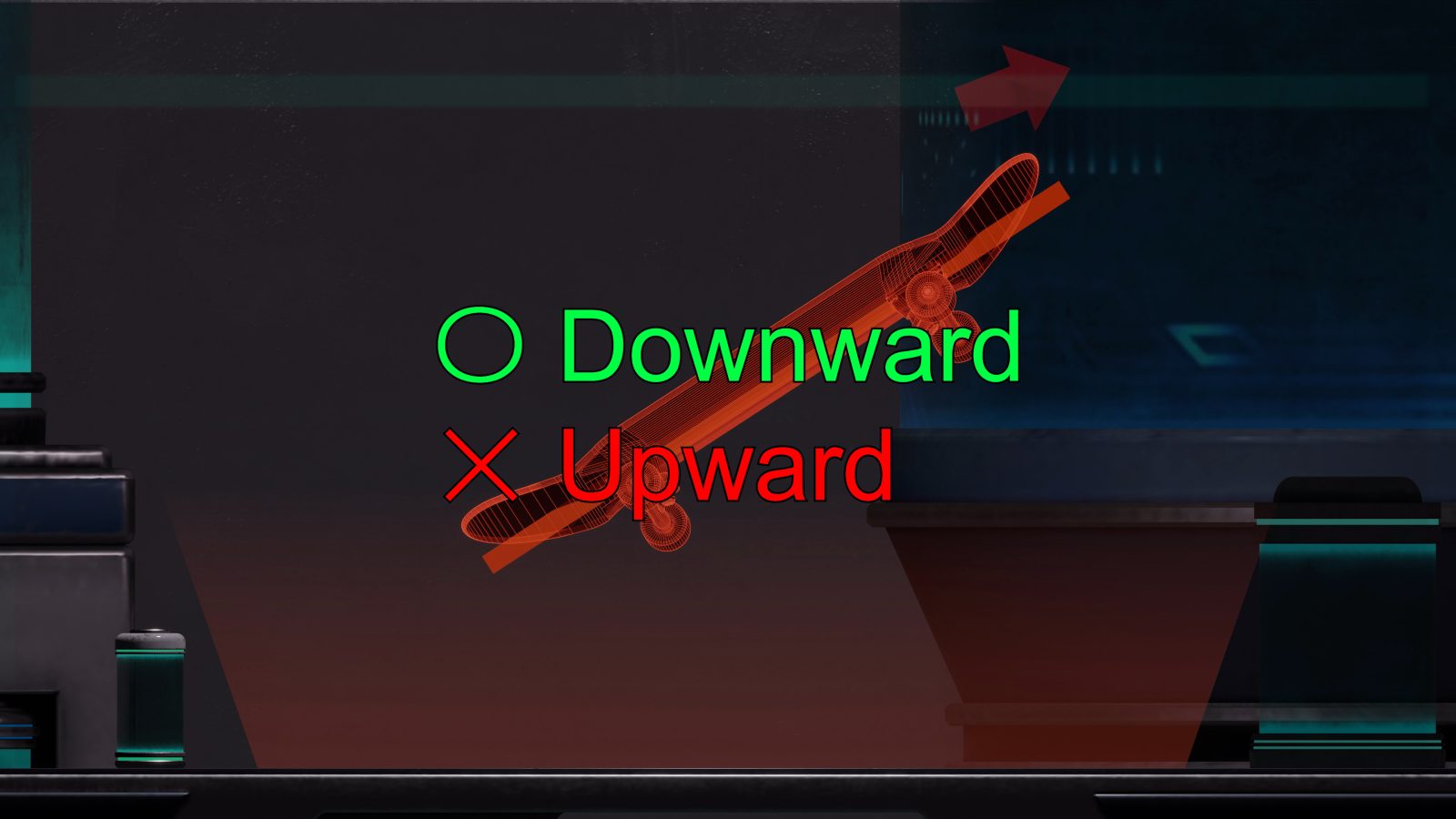
Please do not get me wrong, applying a force diagonally downward does not translate to kicking the board downward. If you do so, your front foot reaches the ground first. Instead, to apply a downward force to the board, swing your leg around your knee. When your lower leg hangs straight down, there's no way to create downward force, no matter how hard you try. But if your leg is bent inward, the lower leg first drops downward, then rises again in an arc.
Breakdown of a Kickflip
First, after popping the tail, lift your front foot straight up. There's no need to slide up the board intentionally.
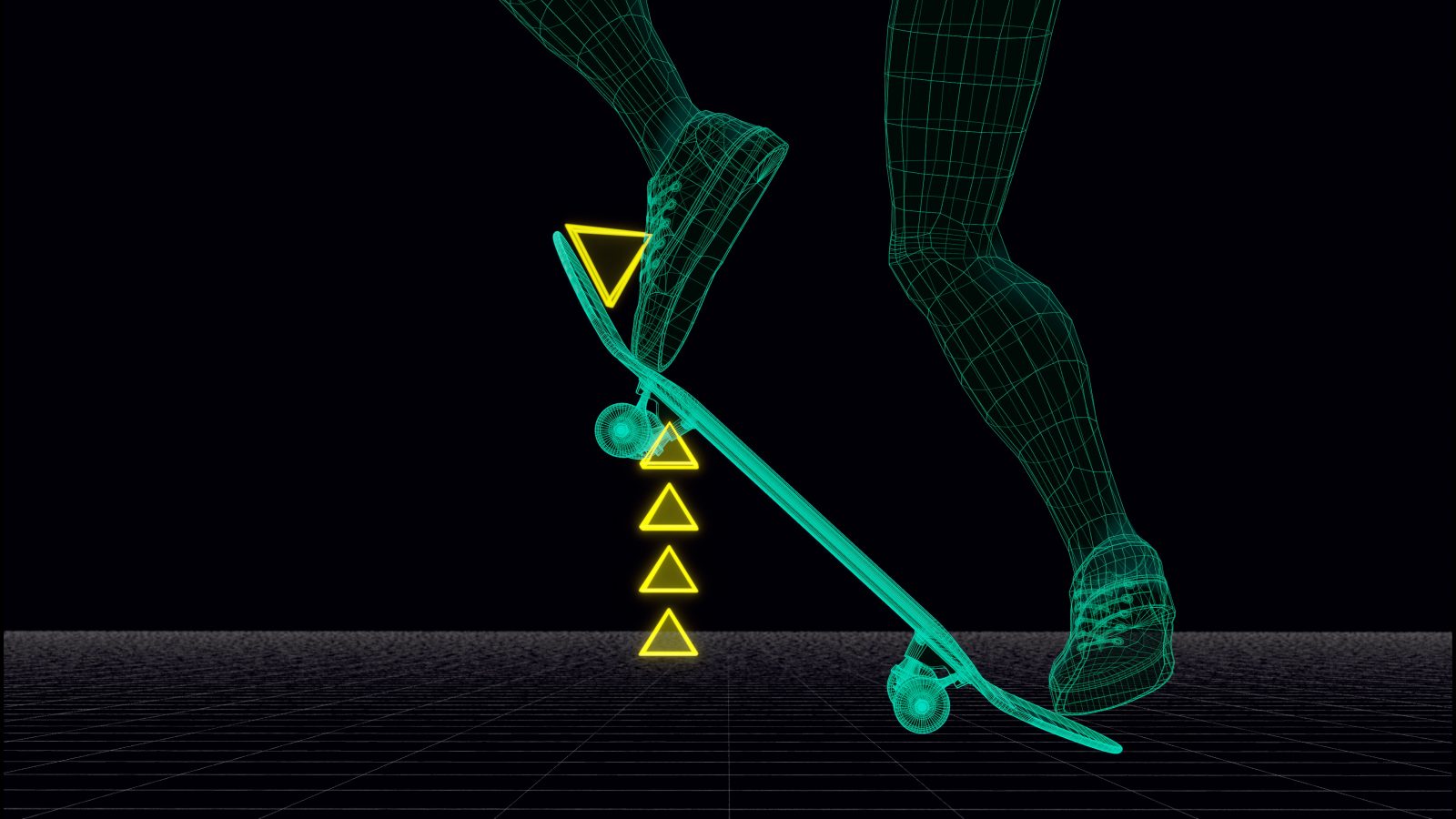
As you pop the tail, the front foot is pushed inward by the nose. Because you're lifting your leg vertically, the foot naturally slides up the board, helping to lift it upward.
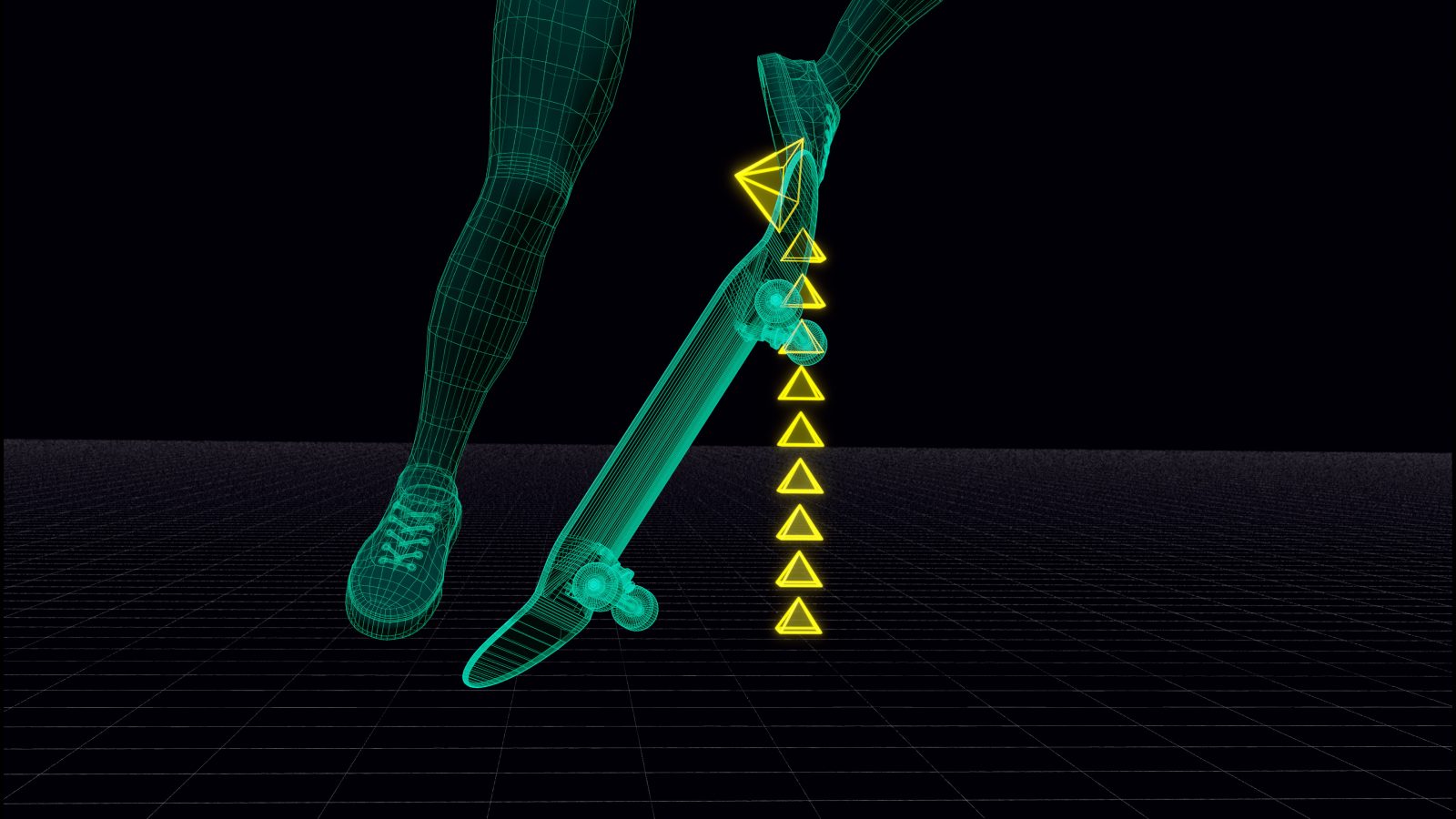
As you slide up the nose, both the board's center of mass and your knee start moving upward.
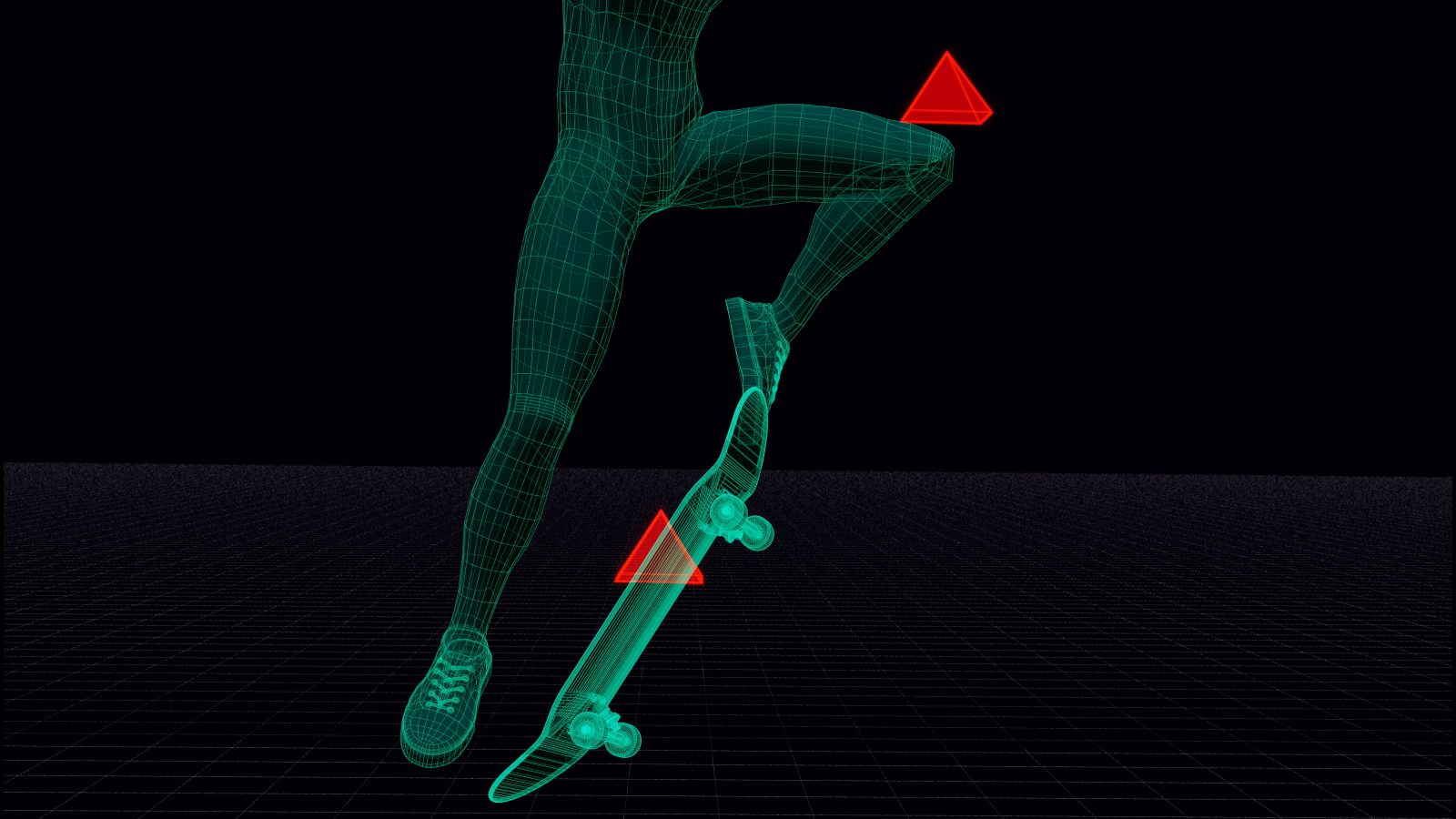
Swing your lower leg outward toward the side of the nose.
At first, the foot travels diagonally downward, then arcs upward again, with the knee as its pivot point.

In this motion, your front foot applies force in the opposite direction of the board's rising momentum, which is exactly what allows the board to flip effectively.
The path of the front foot
Let's examine the actual path of the front foot in a Kickflip using Whythetrick's system. The lime green line marks the position of the front toe, as automatically detected by the system. At first glance, it appears that the front foot keeps rising diagonally, then falls due to gravity. And that's exactly what causes the confusion.
To understand what's really happening, you must distinguish the difference between absolute and relative position. During a flick, the entire leg moves upward. So, the speed of the downward swing gets absorbed by the upward motion of the leg, and as a result, the foot continues rising on an absolute scale.
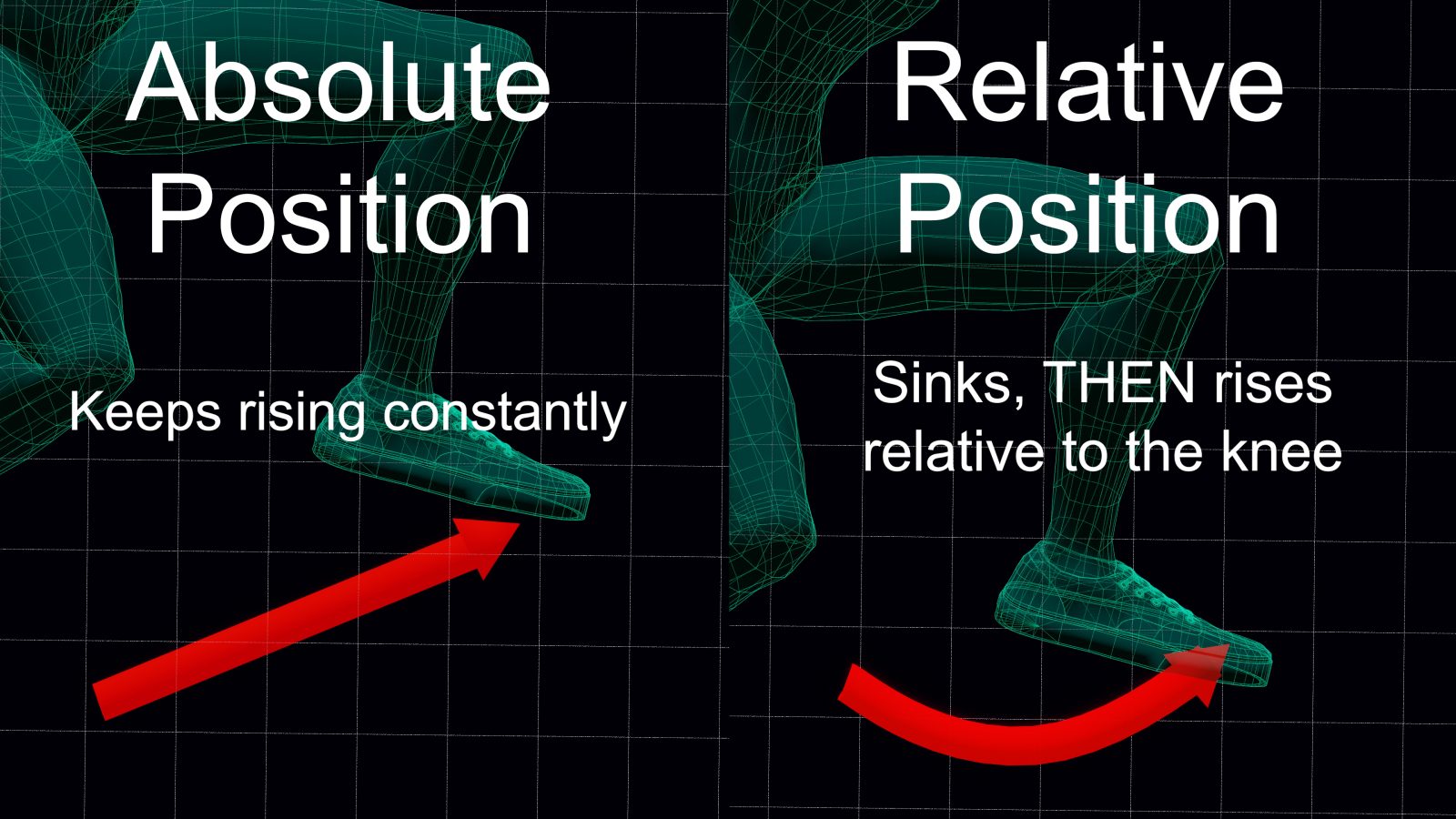
But what really matters is the relative force the foot applies downward from the perspective of the knee. As the leg and the board move upward together, the foot alone moves downward — That difference in velocity is what flips the board.
What happens when you flick up
If you do so, your front foot cancels out the force of the nose pushing back against it. As a result, the foot fails to move inward far enough. Even if you try to swing out your foot from this position, it will not move downward. It only produces a force parallel to the board and never applies a force perpendicular to the spinning axis that the board needs to flip. This is often why the board shoots out forward or sticks to your front foot without flipping. The essential key is generating a downward force.
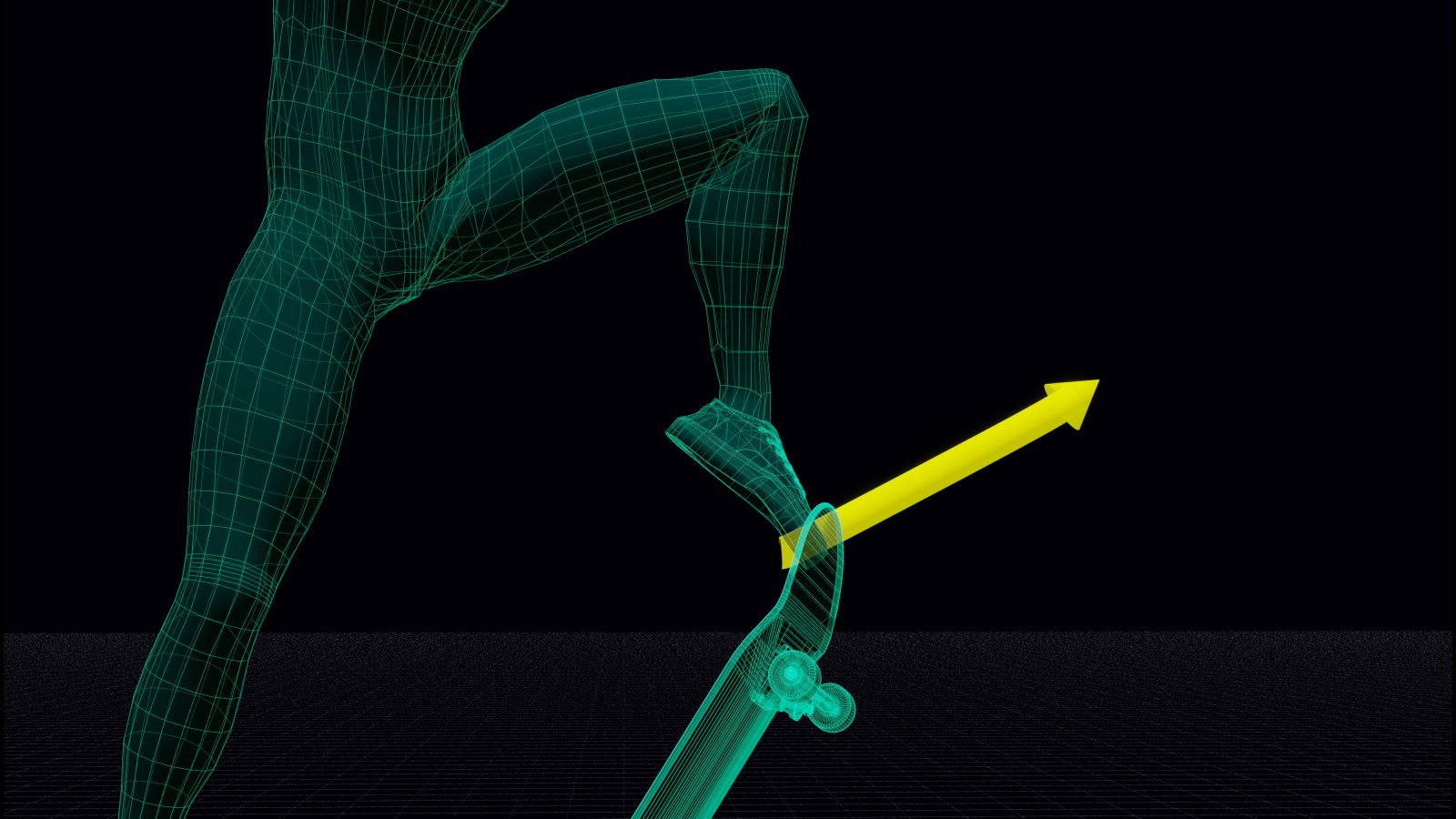
Of course, after the front foot flicks the board, it may end up moving diagonally upward. But that upward motion is merely a byproduct of having applied downward force to the board. It is not the final goal.
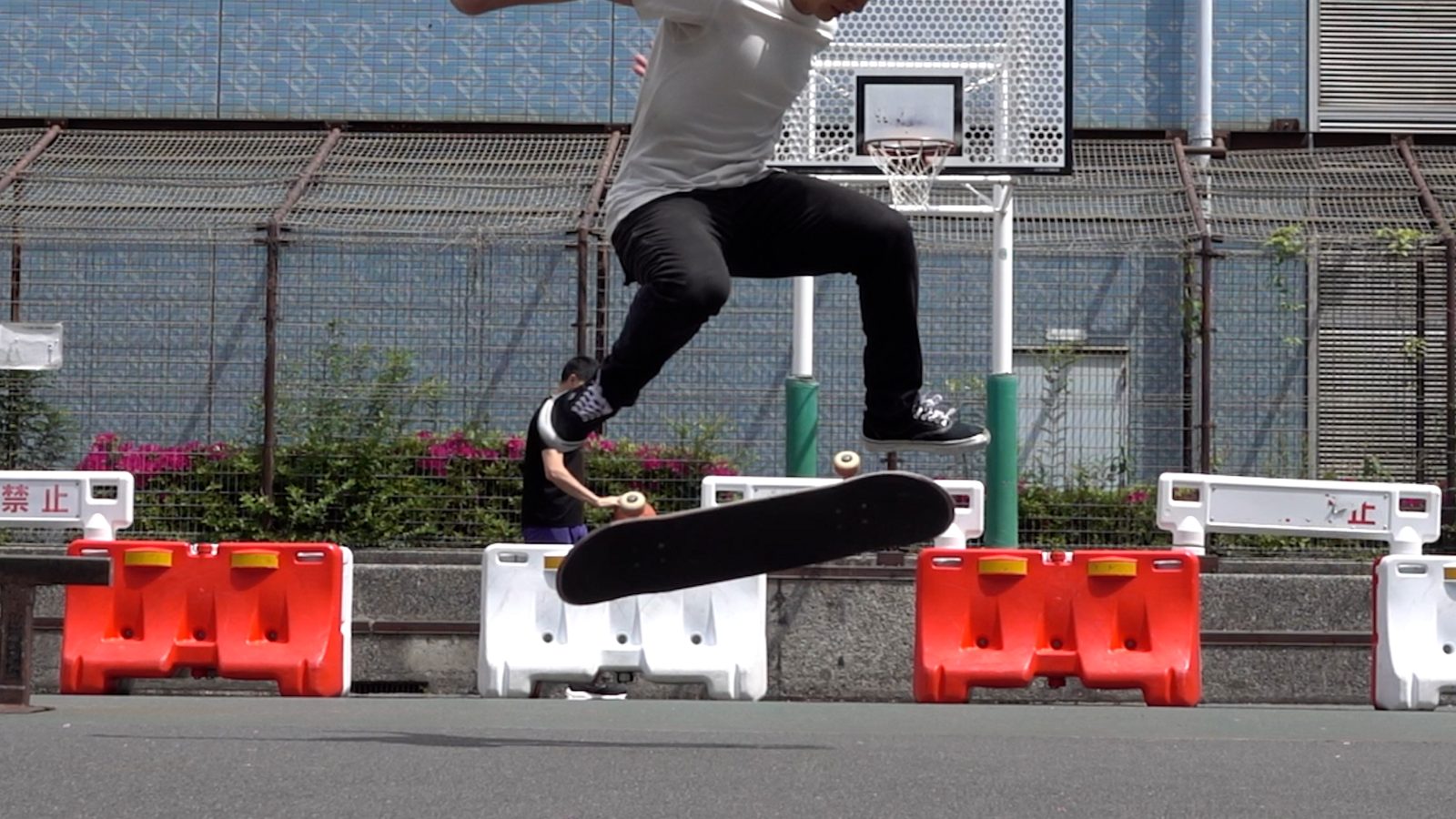
Should you flick harder?
Forget the idea that you need to "flick harder." The board will never flip as long as the direction of the force you apply to the board is wrong, which is a fact backed by physics. Everyone knows you can flip a board with just a small force when you use your hands. And the muscles in your legs are far stronger than those in your hands or fingers. So you ARE already applying enough force. What matters is not how much force you apply but the direction in which you apply it.
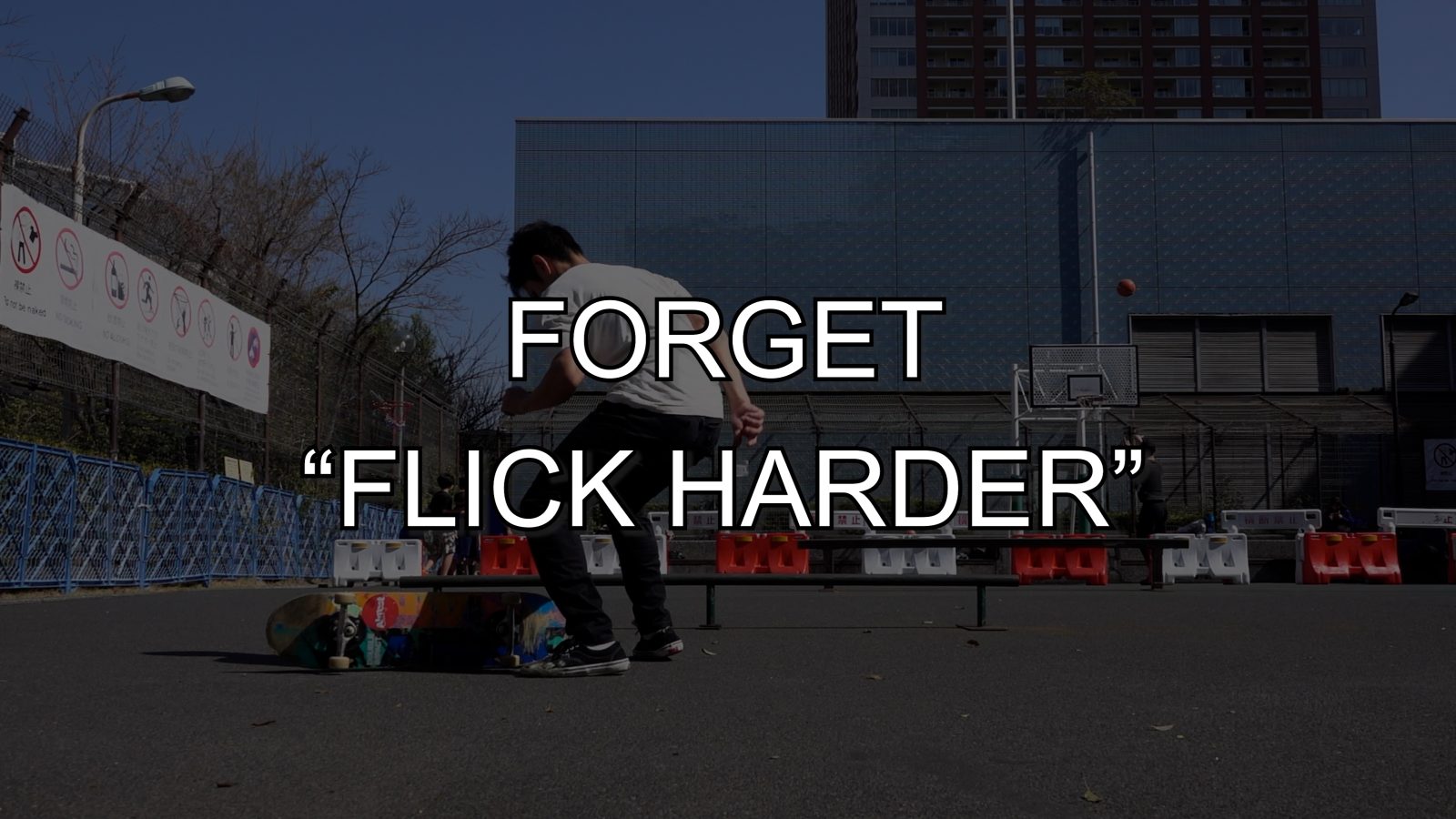
Lift, then Flick
Of the countless combinations connecting the position of the front foot before popping and that of the front foot after the flicking motion is done, the front foot never moves in a straight line. Instead, it always must lift and flick. Lift and flick. Why? Because physics likes it.
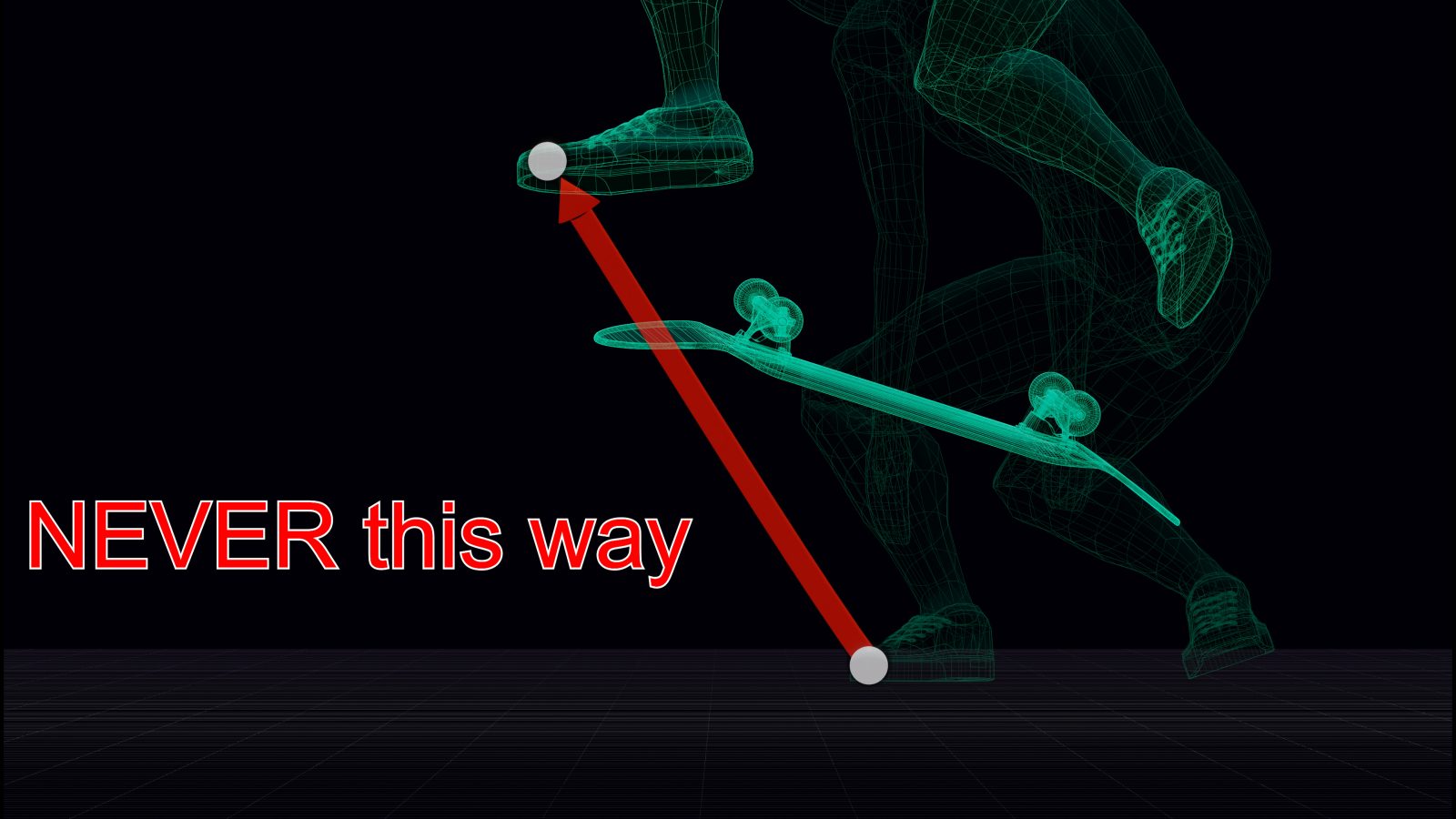
Lifting the body weight
So far, we have discussed the importance of lifting your front knee and leg. But to land back on the board, it's not enough to lift just your front leg. You need to lift your entire body. You might think you can just jump off with your back foot to lift the front leg, but that won't work. Due to the action-reaction, when you lift your front leg, your back leg reacts by dropping, making it impossible to gain enough airtime.
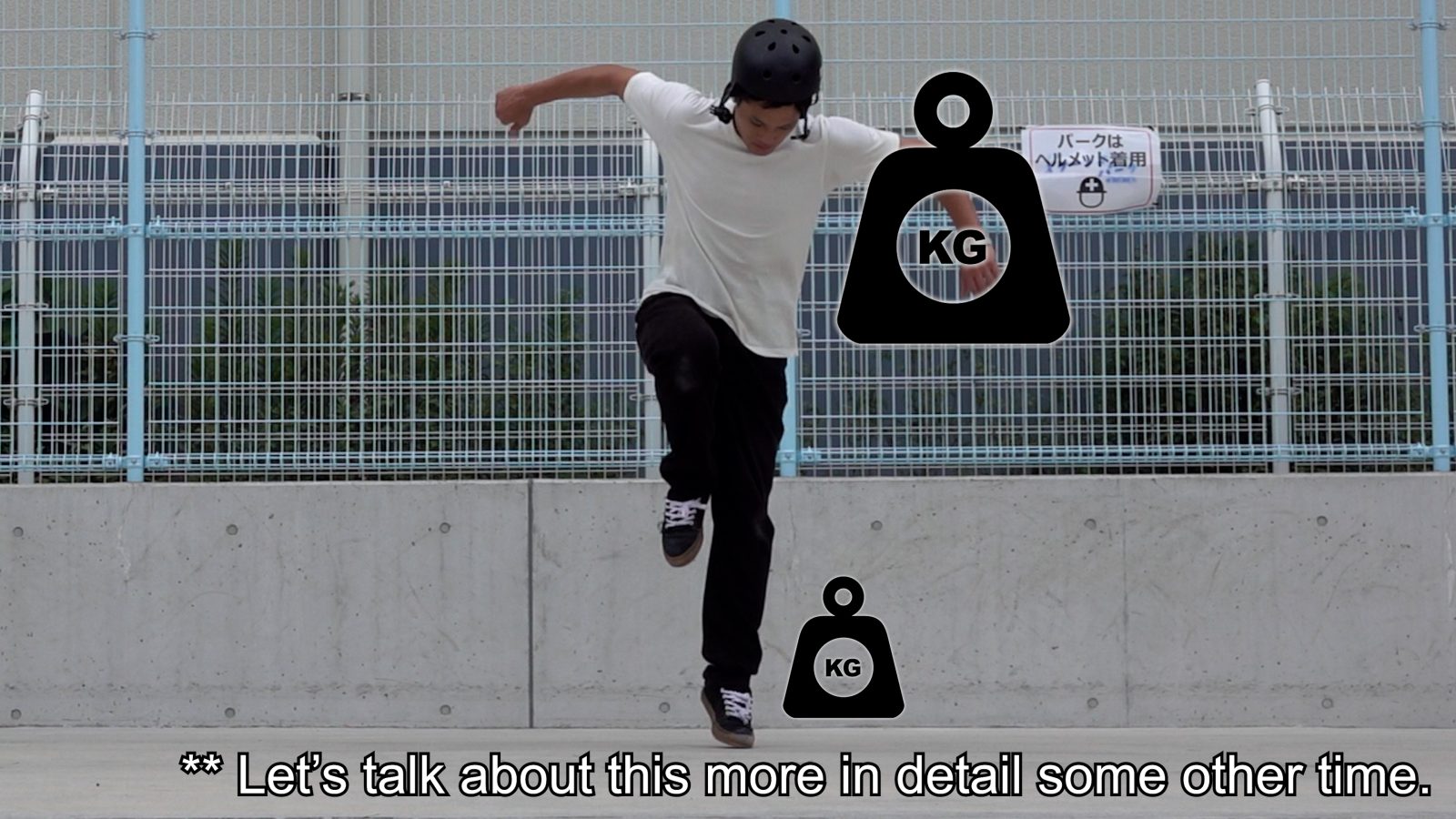
To solve this, try lifting your body weight on your front leg. It's similar to the motion of jumping off one foot. Because your body weight, which has greater mass than your leg, is launched vertically upward into the air, it can effectively pull up the leg without being significantly affected.
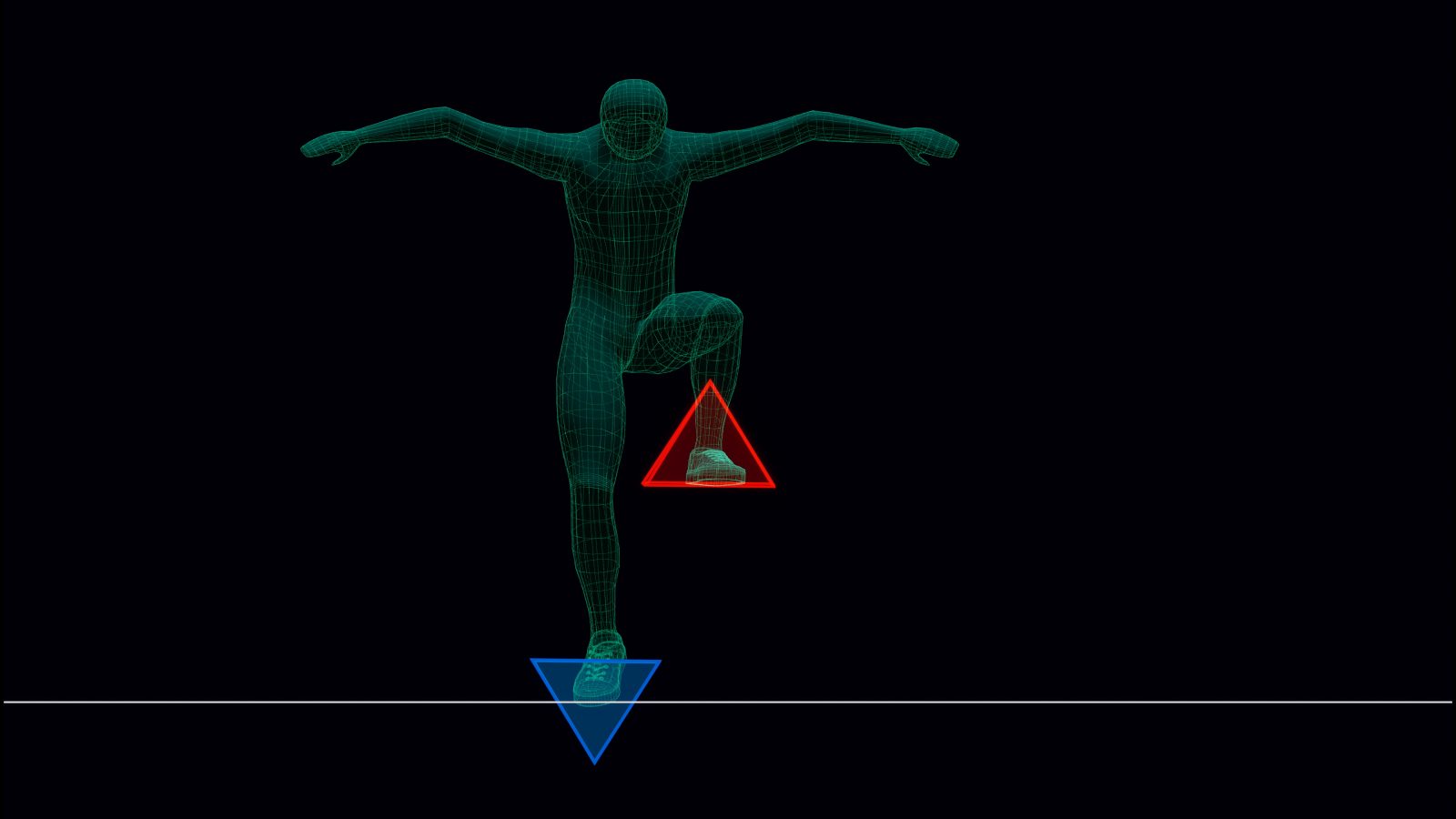
Introducing All in One Analyzer
Finally, let me introduce the latest system from Whythetrick. The "All-in-One AI Motion Analyzer" is a groundbreaking web application that integrates AI directly into a video player. It comes equipped with all the essential tools for motion analysis—adjustable frame-by-frame playback, dual video comparison with synchronized controls, and flexible video positioning and scaling—making it the perfect tool for comparing your movements with others.
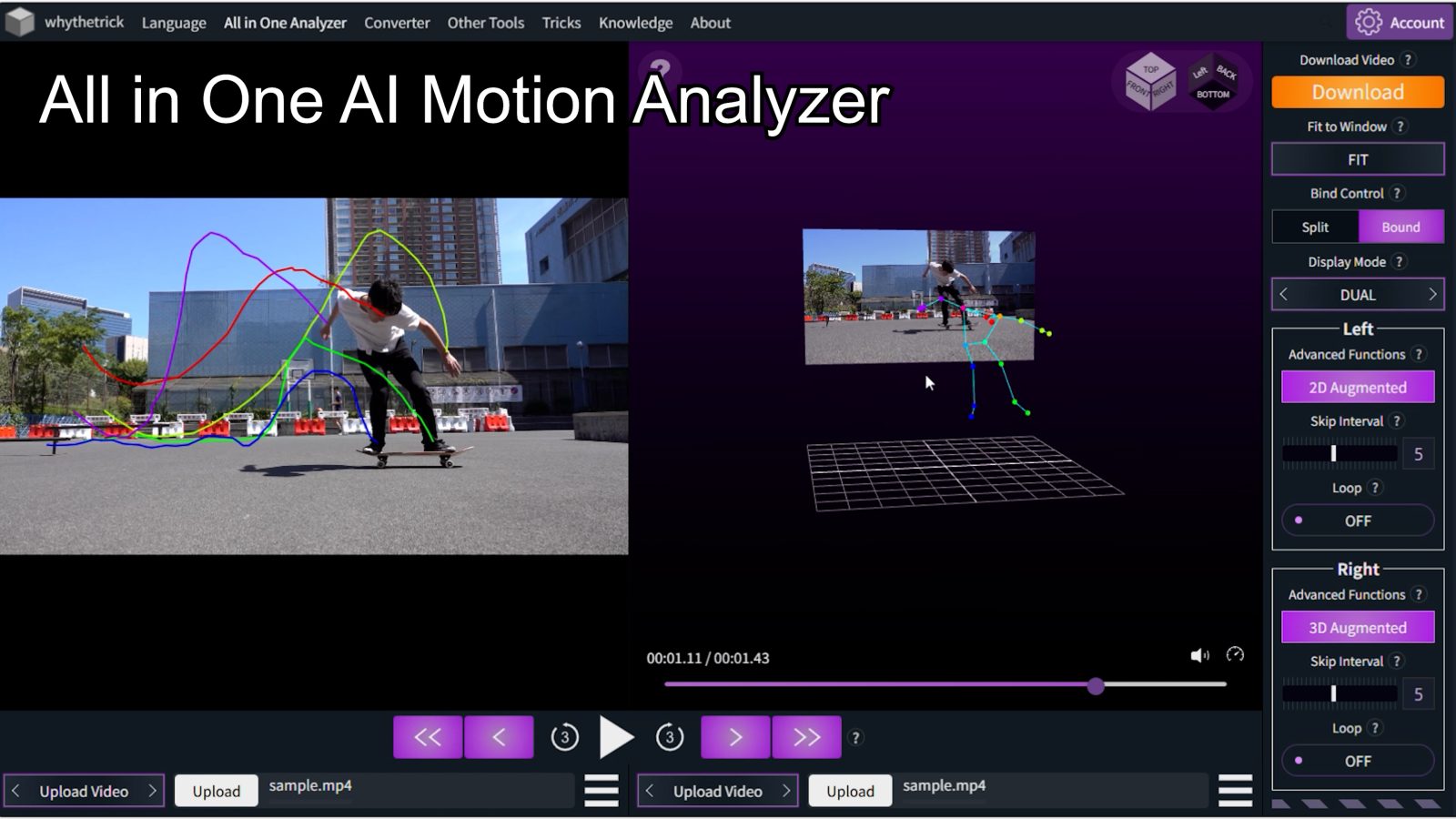
But what truly sets this system apart is its powerful AI-driven pose estimation, motion tracing, and 3D simulation features. The system automatically detects key body parts, visualizes their paths, and allows you to choose which parts to track. You can overlay gridlines or select specific joints to analyze. Better yet, the detected motion is reconstructed in 3D space, giving you the freedom to rotate the view and examine your form from any angle—ideal for spotting hidden imbalances or subtle quirks in your technique. Additionally, you can download your analysis as a video, allowing you to use and share it as needed.
